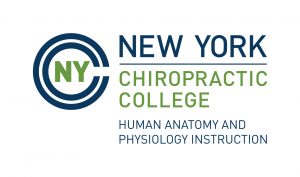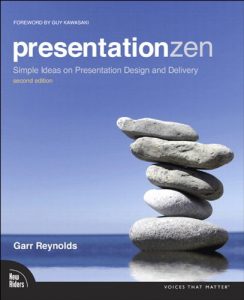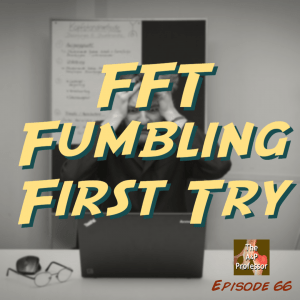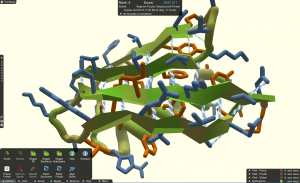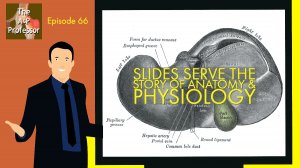Slides Serve the Story of Anatomy & Physiology
TAPP Radio Episode 66
Preview Episode
Preview | Quick Take
A brief preview of the upcoming full episode, featuring upcoming topics—plus word dissections (virus, coronavirus, SARS-CoV-2, pandemic, epidemic), a book club recommendation (Presentation Zen), and more!
00:19 | ADInstruments Free Offer
01:16 | Topics
02:56 | Sponsored by HAPI Online Graduate Program
03:29 | Word Dissection
10:59 | Sponsored by HAPS
11:30 | Book Club
14:15 | Sponsored by AAA
15:21 | Staying Connected
Preview | Listen Now
Preview | Show Notes
Offer from ADInstruments
1 minute
Episode sponsor ADInstruments is offering their Lt online learning platform with content for laboratory solutions in physiology, anatomy, and biology free at this time to help professors get ready-to-go, quality online lab experiences quickly.
🡲 Just go to Adinstruments.com/lt/covid19 to get this offer.
And tell ’em The A&P Professor podcast is where you heard about it!
Upcoming Topics
1.5 minutes
- FFT: fumbling first try
- Zoom-bombing
- Foldit, the online protein folding game
- Keeping teaching slides simple and connected to our story
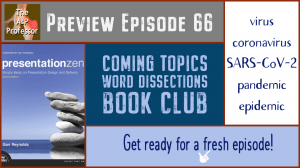
Sponsored by HAPI Online Graduate Program
0.5 minute
The Master of Science in Human Anatomy & Physiology Instruction—the MS-HAPI—is a graduate program for A&P teachers. A combination of science courses (enough to qualify you to teach at the college level) and courses in contemporary instructional practice, this program helps you power up your teaching. It also gets you up to speed with the online teaching strategies. Kevin Patton is a faculty member in this program. Check it out!
Word Dissection
7.5 minutes
- virus
- coronavirus
- SARS-CoV-2
- pandemic
- epidemic
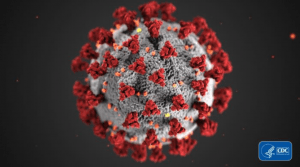
Sponsored by HAPS
0.5 minute
The Human Anatomy & Physiology Society (HAPS) is a sponsor of this podcast. You can help appreciate their support by clicking the link below and checking out the many resources and benefits found there. Watch for virtual HAPS Town Hall meetings to keep in touch and share ideas about moving to remote learning!
Book Club
2.5 minutes
- Presentation Zen: Simple Ideas on Presentation Design and Delivery
- by Garr Reynolds
- amzn.to/2JpWR9N
- For the complete list (and more) go to theAPprofessor.org/BookClub
- Special opportunity
- Contribute YOUR book recommendation for A&P teachers!
- Be sure include your reasons for recommending it
- Any contribution used will receive a $25 gift certificate
- The best contribution is one that you have recorded in your own voice (or in a voicemail at 1-833-LION-DEN)
- Contribute YOUR book recommendation for A&P teachers!
- For the complete list (and more) go to theAPprofessor.org/BookClub
Sponsored by AAA
1 minute
- Check out the Virtual Annual Meeting Week (VAMW) extravaganza!
- April 6-10th, 2020
- theAPprofessor.org/VAMW20
- A searchable transcript for this episode, as well as the captioned audiogram of this episode, are sponsored by the American Association for Anatomy (AAA) at anatomy.org.
Preview | Captioned Audiogram
Regular Episode
Episode | Quick Take
Host Kevin Patton talks about ways to improve our teaching slides, the challenge of trying new things, how to make sure our web meetings secure from Zoom bombing, and the Foldit protein folding game. Check out AAA’s virtual meeting week, OMES virtual conference, HAPS’s virtual town hall meetings.
00:58 | Fumbling First Try
02:33 | Sponsored by AAA
06:19 | Zoombombing
11:09 | Sponsored by HAPI
12:22 | Foldit Protein Folding Game
16:48 | Sponsored by HAPS
17:32 | FreeMedEd: OMES Virtual Conference
19:33 | Slides Serve Our Story
31:27 | Sponsored by ADInstruments
32:52 | Staying Connected
Episode | Listen Now
Episode | Show Notes
When we have no relevant experience or expertise, the vulnerability, uncertainty, and fear of these firsts can be overwhelming. Yet, showing up and pushing ourselves past the awkward, learner stage is how we get braver. (Brené Brown)
Fumbling First Try
5.5 minutes
Professor and author Brené Brown talks about “effing first tries” but which I call “fumbling first tries.” These are the firsts cited in the quote above—those that involve that awkward learner stage. And yes, getting through our FFTs makes us braver!
- Collective Vulnerability, the FFTs of Online Learning, and the Sacredness of Bored Kids (Brené Brown’s blog post) my-ap.us/3by5tay
- Brené on FFTs (Unlocking Us podcast episode) my-ap.us/2yoRpBY
- Making Mistakes Teaching Anatomy & Physiology | Episode 63
Sponsored by AAA
1.5 minutes
A searchable transcript for this episode, as well as the captioned audiogram of this episode, are sponsored by the American Association for Anatomy (AAA) at anatomy.org.
April 6-10, 2020→ Special Virtual Annual Meeting Week at theAPprofessor.org/VAMW20
Don’t forget—HAPS members get a deep discount on AAA membership!
Zoombombing
3.5 minutes
Zoombombing involves unwanted intrusion into our web meetings. There are ways to avoid this however!
- ‘Zoombombing’ Attacks Disrupt Classes (article discussing the importance of familiarizing yourself with the settings in your web meeting platform to avoid intrusive and offensive interruption) my-ap.us/2WGYCHH
- How to Keep the Party Crashers from Crashing Your Zoom Event (post from Zoom on how to manage settings for safety) my-ap.us/3bwesZY
- Are Zoom Chats Private? Here’s Why You Should Think Before Opening The App (Forbes article) my-ap.us/2wfqyaM
- ‘Zoom is malware’: why experts worry about the video conferencing platform (article from The Guardian) my-ap.us/2wgde62
- Web Meeting & Webinar Skills (student handout you can use or adapt for your course)
- Found only in the TAPP app
- Getting the TAPP app
- Search “The A&P Professor” in your device’s app store
- iOS devices: my-ap.us/TAPPiOS
- Android devices: my-ap.us/TAPPandroid
- Kindle Fire: amzn.to/2rR7HNG
- The TAPP app is an easy way to share this podcast
- Even folks who don’t know how to access a podcast can download an app
- 5-minutes to a Great Virtual Meeting Experience (Steve Stewart’s video summarizing what he’s learned about doing web meetings. You can share this with your students, too.)
Sponsored by HAPI Online Graduate Program
1 minute
The Master of Science in Human Anatomy & Physiology Instruction—the MS-HAPI—is a graduate program for A&P teachers. A combination of science courses (enough to qualify you to teach at the college level) and courses in contemporary instructional practice, this program helps you be your best in both on-campus and remote teaching. Kevin Patton is a faculty member in this program. Check it out!
Foldit Protein Folding Game
4.5 minutes
The online protein folding game called Foldit lets you and/or your students help scientists work out protein folding that promotes scientific advancement. And interesting way to learn science, help science, and contribution to potential therapies for COVID-19 and other diseases. Teaching resources are available.
- Foldit: Solve Puzzles for Science (start page for the site where you solve protein folding puzzles) fold.it
- Foldit: Instructions for Educators (help in using Foldit in your course) my-ap.us/39y2Ioe
- The creativity of citizen scientists could help researchers design proteins that may be able to fight the SARS-CoV-2 virus. (Interview with scientists who use Foldit results.) my-ap.us/2Jvhwti
- Want to fold some proteins? (my 2012 post in The A&P Professor blog on Foldit, with links) my-ap.us/33YbH0K
- Protein folding game (my 2012 post for students in The A&P Student blog) my-ap.us/33XbbAf
- Why bother with protein folding? (post in The A&P Professor blog about why I think our students need to know something about protein folding) my-ap.us/2w35y73
Sponsored by HAPS
0.5 minutes
The Human Anatomy & Physiology Society (HAPS) is a sponsor of this podcast. You can help appreciate their support by clicking the link below and checking out the many resources and benefits found there. Watch for virtual town hall meetings and upcoming regional meetings!
Online Medical Education Summit
2 minutes
Past guest on this podcast Chase DiMarco introduces a new event from FreeMedEd—the Online Medical Education Summit (OMES) at FreeMedEd.org/OMES
- Memory Palaces with Chase DiMarco | Episode 64
- Social media:
- Faculty can book a one-on-one chat with Chase DiMarco at
- Students or faculty can get personalized tutoring at
- Read This Before Medical School: How to Study Smarter and Live Better While Excelling in Class and on your USMLE or COMLEX Board Exams
- Chase DiMarco’s book
- amzn.to/2ThbBwv
- Reviewed by Kevin Patton at
- Book Club for Anatomy & Physiology Professors
- Episode 64 Preview (book club segment) theAPprofessor.org/64#pre
Slides Serve Our Story
12 minutes
When we give presentations, it’s best if our slides serve our story—rather than letting our story serve our slides. How to do that? Sparse, well-organized text and lots of pictures.
- Are Your Students Dodging Bullets? (blog post) my-ap.us/2JEMKxX
- Presentation Zen (blog post) my-ap.us/39IwI0J
- Handling bullets safely (blog post) my-ap.us/3aCJgIe
Offer from ADInstruments
1 minute
Episode sponsor ADInstruments is offering their Lt online learning platform with content for laboratory solutions in physiology, anatomy, and biology free at this time to help professors get ready-to-go, quality online lab experiences quickly.
🡲 Just go to Adinstruments.com/lt/covid19 to get this offer.
And tell ’em The A&P Professor podcast is where you heard about it!
Need help accessing resources locked behind a paywall?
Check out this advice from Episode 32 to get what you need!
Episode | Captioned Audiogram
Preview | Transcript
The A&P Professor podcast (TAPP radio) episodes are made for listening, not reading. This transcript is provided for your convenience, but hey, it’s just not possible to capture the emphasis and dramatic delivery of the audio version. Or the cool theme music. Or laughs and snorts. And because it’s generated by a combo of machine and human transcription, it may not be exactly right. So I strongly recommend listening by clicking the audio player provided.
 This searchable transcript is supported by the
This searchable transcript is supported by the
American Association for Anatomy.
I'm a member—maybe you should be one, too!
Introduction
Kevin Patton:
Hi there. This is Kevin Patton with a brief audio introduction to episode number 66 of The A&P Professor podcast, also known as TAPP Radio, an audio survival bunker for teachers of human anatomy and physiology.
ADInstruments Free Offer
Kevin Patton:
Our friends at ADInstruments who are helping to support this episode have just announced an offer to let any of us use their Lt online learning platform for free. Their Lt platform is an online learning environment that you can set up very quickly. It contains ready-to-use content for anatomy, physiology, and related courses, even medical courses. It has over 360 interactive and fully customizable lessons and labs that are just the thing for remote learning. You want to know more about this? Yeah. I knew it. Just go to adinstruments.com/lt/covid19 to find out more, or use the link in the show notes or episode page.
Topics
Kevin Patton:
In the upcoming full episode, that is episode number 66, we’re going to continue the conversation about how to quickly and effectively move our on-campus A&P course to remote learning. As part of that discussion, I’m going to talk about what author and professor Brene Brown calls FFTs. Now, I translate FFTs as fumbling first tries. She has another phrase she uses, and I’ll talk to you about what that phrase is and why it’s important for A&P teaching in the full episode.
Kevin Patton:
Something else I’m going to talk about is a phenomenon called Zoombombing. It’s something that I put some links in the show notes for the previous episode, but I didn’t run across it in time to get it into the audio part, so I’m going to be doing that in the full episode 66.
Kevin Patton:
Something else I’ll be talking about briefly is the online protein folding game called Foldit and how we can use that in teaching and learning in A&P and how that relates to the current pandemic.
Kevin Patton:
The featured topic is going to be about our teaching slides, how we can keep them simple and keep them connected to the story we’re going to tell. These are skills that I’ve learned and I’m continuing to learn over a period of time. It can help us now at this time when we’re scrambling to deliver our story and our slides in a different way than we’re used to, but these are principles and techniques that can also be used once we get back on campus too. All of that and more coming up in full episode number 66.
Sponsored by HAPI Online Graduate Program
Kevin Patton:
The free distribution of this podcast is sponsored by the master’s in Human Anatomy & Physiology Instruction, the HAPI degree. Our graduates are now ready and able to move quickly to remote learning, having had both the student and teacher experiences in training needed to be experts. Check out this online graduate program at nycc.edu/hapi. That’s H-A-P-I. Or click the link in the show notes or episode page.
Word Dissection
Kevin Patton:
I know you’ve missed it, but here it is, finally, once again, word dissection, where we practice what we all do in our teaching and take apart words and translate their parts to deepen our understanding. Sometimes they’re old and familiar terms, and sometimes they’re terms that are new to us. Maybe so fresh that they’re new to everyone.
Kevin Patton:
The first one on our list today should not be surprising. It’s the term virus. Now, that’s a simple term that everybody uses all the time, but what does it literally mean? It literally means, when we translate it, poison, which makes sense, right? It can also mean slime or ooze, which makes it sound even uglier and nastier than just thinking of it as poison. These little particles that are creating such havoc in our world right now, those we can think of in a way as poison particles. Of course, they’re going to be working differently than many other poisons do, but they are a hazard, a particle that is a hazard, to our biological function.
Kevin Patton:
The next term on our list is related, and that is coronavirus. The word part corona, which actually is part of a lot of different terms in anatomy and physiology, as well as in virology, and corona means crown. This virus is named for the crown-like arrangement of protein spikes in the virus particle’s protein code or capsid. Of course, the second part of the word is virus, so it’s just corona attached to virus, meaning the virus with a crown, or with this crown-like arrangement. That group of viruses called the coronaviruses was named quite a while ago, back in the 1960s. It’s almost as old as I am, but of course, we’ve only more recently been hearing a lot about it in the news and coming up in various conversations that we’re hearing right now.
Kevin Patton:
Related to coronavirus is our next term on our word dissection list, and that is the name of the virus itself. That is, SARS-CoV-2. That’s capital S-A-R-S hyphen capital C, small O, capital V, hyphen 2. SARS-CoV-2. Breaking that down, the first part, SARS, is an acronym that means severe acute respiratory syndrome. This virus got that name because the virus that’s causing the current outbreak is genetically related to the virus that caused the SARS outbreak of 2003. Then the next part, the CoV part, is short for coronavirus. Co for corona, V for virus. Putting those two parts together, SARS-CoV, we’re talking about a SARS, related at least, SARS-related coronavirus.
Kevin Patton:
Okay. That tells us a lot so far, but it wasn’t the first one discovered. It wasn’t the one that caused the SARS outbreak in 2003. It’s a new one, so we’re going to call it number two because it’s not the first one. SARS-CoV-2 was officially named in February of 2020.
Kevin Patton:
Now, this virus causes a disease that is called COVID-19. COVID-19 was broken down in a word dissection back in the special post-preview episode number 64, so you can go back and review that if you want. Now, in that previous word dissection, I mentioned that the World Health Organization named COVID-19, so that’s the disease. They named the disease using existing guidelines, and they did that on February 11, 2020. Now, that’s who names diseases in the ICD, or International Classification of Diseases. On the very same day, the International Committee on Taxonomy of Viruses, or ICTV, named the SARS-CoV-2 as the agent of that disease. Now, it’s the ICTV who sets the official names of viruses. The World Health Organization names diseases, and this organization on the taxonomy of viruses, they name viruses. Their official name is International Committee on Taxonomy of Viruses, ICTV.
Kevin Patton:
Now, interestingly, the World Health Organization has been avoiding using the term SARS-CoV-2 directly when they’re giving out their public communications because they want to avoid the public confusing COVID-19 with SARS, that is, that original outbreak from 2003, because it is a different virus and a different disease. Yeah, they’re related. Yes, conceptually, they’re connected with each other, but it’s so easy in public communications for things to get out of focus and confused. In order to avoid confusion, they’re instead referring to it indirectly as the virus responsible for COVID-19. Now, they’re not denying or abandoning the official virus name. They’re just kind of finessing their language a little bit to avoid using the official name, again, to avoid confusion.
Kevin Patton:
The next term on our list is pandemic. We all use this term a lot, but breaking it down I think gives us insight into its meaning a little bit different maybe than we have when we’re not thinking too much about what it means. The first word part, pan, means all. The next word part, dem, means people, as in our term demographics, or democratic. When I say people, I’m really using that in the sense of a group of people, as we would look at in a demographics study, for example. Then the ic ending means relating to.
Kevin Patton:
Pandemic describes a situation that relates to all people. Now, of course, that’s not meant absolutely literally. It just means that potentially all people could become exposed to a pandemic disease or be affected directly or indirectly by a pandemic disease.
Kevin Patton:
Now, that’s a more widespread phenomenon than the next term on our list, which is epidemic. Epi means upon. We put that together, it’s upon a group of people, or something relating to something that affects a whole group of people. A condition becomes epidemic when a whole group of people is affected. When that extends to a wider group that is across the globe, now again, not literally every single corner, but much more widespread than a typical epidemic, then we elevate that to the status of pandemic. Again, it’s the World Health Organization that usually gives the official designation of something being an epidemic or pandemic, but you’ll see these terms often used outside of those official designations.
Sponsored by HAPS
Kevin Patton:
This podcast is sponsored by HAPS, the Human Anatomy and Physiology Society, promoting excellence in the teaching of human anatomy and physiology for over 30 years. Now is a great time to reconnect with HAPS and find out about virtual town hall meetings coming up soon and a bunch of regional meetings slated for the future. Go visit HAPS at theAPprofessor.org/haps. That’s H-A-P-S.
Book Club
Kevin Patton:
Hey, let’s step into the bookshop. Uh-oh. Wait a minute. There’s a sign on the door. They’re closed because of social distancing during this pandemic outbreak. Oh well. Good for them. I think that’s the right thing to do, but what are we going to do about the A&P Professor book club? Oh, yeah, yeah, yeah. I have a key. I’m just going to go ahead in. Let’s go into the bookshop and see what we want to add to our personal professional bookshelf.
Kevin Patton:
Aha! Here’s the book I’m looking for, an old but favorite book called Presentation Zen: Simple Ideas on Presentation Design and Delivery by Garr Reynolds. Now, the name of this book pretty much sums up the central message, and that is, simplifying our presentations, specifically our slide presentations, in a way that makes them way more effective. This is a quest that I’ve been on for decades, one that I’m going to share more about in the upcoming full episode. This book is a perfect companion to that discussion because it’s one of the many tools I’ve used to simplify and improve my presentations over the years.
Kevin Patton:
Now, there’s a lot of advice in the book, but three pieces of advice that really pop out for me are these. Number one, tell a story. That is, tell it, don’t put it all on your slide. Don’t let your slide tell the story. You tell the story. Your slide is just a tool that you’re going to use for you to tell your story. Tip number two that I learned from the book is use pictures a lot. That’s what helps students really get it, and particularly in our fields of anatomy and physiology.
Kevin Patton:
The third thing that’s in the book that really resonated with me is keep each slide simple. Think about that. Do you really want them reading the slide or do you want them listening to your story? Hopefully, they’re listening to your story, not reading the slide, so you need to keep that slide as simple and as text-free, text-sparse as possible.
Kevin Patton:
Now, I’ll leave the rest for you to discover and mull over and decide what you want to incorporate into your own teaching. Once again, the book is Presentation Zen: Simple Ideas on Presentation Design and Delivery by Garr Reynolds.
Sponsored by AAA
Kevin Patton:
A searchable transcript and a captioned audiogram of this episode are funded by AAA, the American Association for Anatomy. The April annual meeting of AAA had to be canceled of course, but AAA is doing this amazing thing instead. They put together what they’re calling the Virtual Annual Meeting Week, or VAMW for short. It’s not really an online version of the conference exactly. Instead, it’s a well-thought out set of open access online symposia and other events that you can choose from. There’s an anatomy art show and a rundown of some of the research highlights that would have been explored at the meeting. There’s a lot there. It’s just kind of hard to describe. It runs from April 6-10. You can find out more at theAPprofessor.org/vamw20.
Staying Connected
Kevin Patton:
This is Kevin Patton signing off for now and reminding you to keep your questions and comments coming. Why not call the podcast hotline right now at 1-833-LION-DEN? That’s 1-833-546-6336. Or visit us at theAPprofessor.org. I’ll see you down the road.
Episode | Transcript
The A&P Professor podcast (TAPP radio) episodes are made for listening, not reading. This transcript is provided for your convenience, but hey, it’s just not possible to capture the emphasis and dramatic delivery of the audio version. Or the cool theme music. Or laughs and snorts. And because it’s generated by a combo of machine and human transcription, it may not be exactly right. So I strongly recommend listening by clicking the audio player provided.
 This searchable transcript is supported by the
This searchable transcript is supported by the
American Association for Anatomy.
I'm a member—maybe you should be one, too!
Kevin Patton:
Professor and author Brené Brown recently wrote, “When we have no relevant experience or expertise, the vulnerability, uncertainty, and fear of these firsts can be overwhelming. Yet showing up and pushing ourselves past the awkward learner stage is how we get braver.”
Aileen:
Welcome to The A&P Professor. A few minutes to focus on teaching human anatomy and physiology with a veteran educator and teaching mentor, your host, Kevin Patton.
Kevin Patton:
In this episode I talk about fumbling first tries, Zoom bombing, a protein folding game and keeping teaching slides simple.
Kevin Patton:
That quote by Brené Brown that I used in the episode opener is from a recent blog post that she wrote, which also resonates with the first episode of her new podcast called Unlocking Us. It emphasizes something that I’ve seen in my students and in myself over the years. That is that whole set of fearful, panicked, frustrating, maddening, trying emotions that we experience when we’re doing something for the first time…
Kevin Patton:
What Brown calls an FFT, which stands for … well, I’m not sure how I can say this without getting my podcast kicked out of 14 different countries. Let’s just say effing first time. I like having a name to call it. Brown emphasizes that naming it and recognizing it can help us a lot. But for me FFT stands for fumbling first try. That’s because for me, the F bomb is the nuclear option, which I’d rather hold in reserve for something really, really, really, really big.
Kevin Patton:
But, this pandemic thing may be the time you want to consider using Brown’s version of FFT instead of mine. But for me it’s still in reserve for now. If you’ve been around me or my podcast for a while, you’ve heard this from me already, but it’s probably a good time to revisit it.
Kevin Patton:
That is, the idea that trying something new to us is always, always, always, always going to be frustrating. It’s going to produce any or all of those FFT feelings. But as soon as we can recognize the situation as a fumbling first try, and that it, well, is kind of expected to include some fumbling after all, it’s right there in the name, fumbling first try … then we’re in a way better spot than just being pulled down by it or distracted by the negative aspects.
Kevin Patton:
As soon as we recognize that frustration is an essential part of learning something new, we can turn it from a force of evil to become a force for good. I often remind my students that babies just learning to walk don’t just get up and start walking. They try, they tip, they fall, they get frustrated. But they get back up, again, and again, and again and eventually they master that walking thing.
Kevin Patton:
But it seems the older I get, the less resilient I become about learning. The more frequently I let that FFT thing eat at my attitude before recognizing it. And, well, sort of kind of embracing it as part of the learning process. In her blog post, Dr. Brown tied the FFT phenomenon to the sudden switch to remote learning that we’re all experiencing right now. And gave three pieces of advice that resonate strongly with the advice that I’ve been giving in this podcast over the last few episodes.
Kevin Patton:
Now, I’d recommend that you read her post, but in a nutshell she summarized three key principles in going to remote learning successfully. Her first one is build the container first. What she means by that is spend some time on how things are going to be working, not on the content. Then it’s visit with your students a little bit. And just get them all settled in. And forget about the content in your first or second meeting. You need to have that container there before you can start putting content into it.
Kevin Patton:
Her second principle is don’t assume that every student has the same access, or attention span, or freedom from a distraction that we do. Or that they did when they were still on campus. Things are all way different now. Which leads right to her third point, which is do everything in small chunks.
Kevin Patton:
When she explains that, she mentions the research that went into setting the limit for Ted Talks to 18 minutes. So, remember that less is more thing I’ve been harping on? It kind of fits right in there, it kind of dovetails right in there, doesn’t it?
Kevin Patton:
Which leads me to one last thought. Ha, I think I caught you. It will be years before I even get close to my final thought. But one last thing that I’ll mention in this segment is to emphasize the advice that I give in this podcast or the advice that I share from others is not going to work for everyone. I know that. But I’m sharing it because it will likely help you sort out what you want to do, or new things you want to try.
Kevin Patton:
I’ve pushed through my FFTs with the techniques and principles I’ve shared with you. I know you’ll struggle with even believing that they might work, just like I did at one time. And that you’ll have your own FFT struggles if you do try to adapt them to your own course. But I’m telling you, that’s where some of the best fun in teaching is. Wrestling with and pushing past our FFTs, our fumbling first tries.
Kevin Patton:
A searchable transcript and a captioned audiogram of this episode are funded by AAA, the American Association for Anatomy. The April annual meeting of AAA had to be canceled. We know that, but AAA is doing something that’s, well, just kind of amazing. They’ve put together what they’re calling the Virtual Annual Mini Week or VAMW for short. It’s not really an online version of the conference. Not exactly. Instead, it’s this well thought out set of resources and activities and so on.
Kevin Patton:
For example, there’s a whole list of open access online symposia and other events that you can choose from. There’s an anatomy art show. There’s a rundown of some of the research highlights that would have been explored at the meeting had the meeting actually taken place. I don’t know, It’s just hard to describe. It runs from April 6th to April 10th. So you want to tune in soon now. And you can find out more about it. At theapprofessor.org/VAMW20. Again, theapprofessor.org/VAMW20.
Kevin Patton:
Something I became aware of just as the last episode was being released is a phenomenon sometimes called Zoom bombing. So, I put some links in the show notes for the last episode, but it was too late to add it to the audio. So, I’m doing it now. Zoom bombing is like photo bombing, where somebody intrudes into your photo that you’re taking. Only instead of intruding into your photo, they’re intruding into your Zoom meeting, or Google Hangouts meet, or Skype, or GoToMeeting, or [inaudible 00:08:18], or whatever it is that you’re using.
Kevin Patton:
They’re either not supposed to be there but got into your meeting anyway, or they’re supposed to be there, but they’re disrupting the flow of your web meeting by posting offensive or distracting texts in the chat window, or harassing other students with private chat messages. Or suddenly sharing their screen with the whole class. And what’s on their screen may be something no one should be seeing.
Kevin Patton:
Now, depending on how closely you watch what’s happening in the chat window, or even on the main screen, you may not even be aware it’s going on. And if you are aware, it’s hard to figure out the best strategy for handling it. Now, I got pretty much nothing to tell you on that score. It’s never happened to me and I don’t know how I’d react. But I’m starting to think about it.
Kevin Patton:
Back in the olden days when I was an apprentice lion tamer, the first thing I learned before going into a cage of big cats is what I’d do if something went wrong. And things did go wrong sometimes, and those preparations may have literally saved my life. So, you bet I’m going to think through some strategies about what to do if I get Zoom bombed. But as in lion taming, the very best strategy is to avoid having problems in the first place.
Kevin Patton:
Luckily, that kind of advice is easy for me to give you, because somebody has already done that. The folks at Zoom, they’ve posted a whole set of ways to avoid being Zoom bombed, which mainly on boiled down to adjusting your settings. Most of us just use the default settings on anything that we’re new to. Because, well, they must be there by default because they work well.
Kevin Patton:
That’s true in Zoom and other web meeting platforms, but the default settings don’t usually limit functionality in ways that prevent zoom bombing. Things like, adding a password before anyone can log in. And distributing that password directly to students, perhaps in the learning management system just a few minutes before the meeting starts. So it’s less likely to get into the wrong hands.
Kevin Patton:
I have again added those links I mentioned before in the show notes and at theapprofessor.org/66. I also updated my sample student handout for web meeting skills to include advice about not sharing login credentials with others and about avoiding disruptions. That student handout is available in the free TAP app as a PDF download. You’re welcome to use it as is or adapted for your own course.
Kevin Patton:
The free distribution of this podcast is sponsored by the master of science and human anatomy and physiology instruction. The happy degree.
Kevin Patton:
A few days ago I got a note from one of our happy graduates who wanted to thank us for the prep and online teaching she received in the Happy Program. She said that due to her school being shut down until further notice, everyone had to transition to online teaching of students. A familiar story, right? And she said that she feels very comfortable doing this because of the instruction, experience and practice she got through Happy as well as the exposure to the best online practices.
Kevin Patton:
She said that she uses what she learned in Happy on a daily basis. And that was true even before the COVID-19 shutdown. Check out this online graduate program at nycc.edu/hapi. That’s H-A-P-I. Or click a link in the show notes or episode page. Hey, there’s a new cohort forming right now, so maybe you want to get in touch with them soon.
Kevin Patton:
I have always spent a bit of time in my A&P courses talking about protein folding. Why bother? Isn’t that way more than beginning students need to know for an AP course preparing students for health careers? Yeah, maybe. But I think that beginning A&P students benefit from knowing at least a way a wee little bit about protein folding.
Kevin Patton:
Knowing the very basic principles of protein folding helps students visualize the complex shape of proteins. And that, in turn, helps them understand that it’s all about shape. As a matter of fact, I repeat that phrase a lot throughout my course. The phrase, “It’s all about shape.” When we encounter proteins doing what they do.
Kevin Patton:
So, it’s all about shape when they’re trying to understand how proteins like enzymes, receptors, and well, most other proteins work. Proteins that they’re going to encounter many times throughout their A&P course and beyond.
Kevin Patton:
Because it underlies all concepts about human proteins, I consider protein folding a core concept that I can use as a running thread in my stories over the course of two semesters to help students understand a lot of different things about the structures, actions, and roles of proteins in many different parts of the human body.
Kevin Patton:
My students are very familiar with that invocation of the phrase, “It’s all about shape,” when I’m telling stories about signal transduction in the nervous or endocrine system, or how cells are connected to each other, or why this enzyme will work here in this process, but not over there in that process. Or even just the basics of how enzymes work in general.
Kevin Patton:
Besides that, protein folding has become a key concept in understanding not only how the body functions, but how to intervene therapeutically in important diseases. If new therapies based on understanding protein folding continue to emerge, a set of therapies that many of our students will likely encounter in their professions, don’t we owe it to them to cover the basic ideas of protein folding?
Kevin Patton:
And yes, working out puzzles of protein folding are being used even as we speak, to work out potential therapies for COVID-19. For example, trying to find a protein that will fold in such a way to bind to and block those darn spike proteins on the SARS-CoV-2 virus particle that causes COVID-19.
Kevin Patton:
Now is an especially good time to bring up an interesting phenomenon related to protein folding and citizen science using an online game called Folding. Longtime followers of The A&P Professor may recall my first mention of it way back in a blog post in 2012. If you don’t remember it, that’s okay because, “Hey, I’m telling you now.” The folded game is an online puzzle game in which anybody can try their hand in finding which way a given protein folds most efficiently.
Kevin Patton:
Interestingly, this is proven to yield useful results for biochemists not obtainable by traditional methods. The Folded team is always swapping out projects to work on. But recently there’s been a focus on protein binders that may help us treat or at least better understand the mechanisms of COVID-19. Beside the option of us or our students going into Folded on our own because well, we’ve had it with board games and tabletop jigsaw puzzles, the folks at folded do have some resources at the Folded site for educators wanting to integrate the game into the curriculum.
Kevin Patton:
Just go to fold.it. That’s fold.it. Or use any of the links about this in the show notes or episode page at theapprofessor.org/66.
Kevin Patton:
Marketing support for this podcast is provided by HAPS, The Human Anatomy And Physiology Society. promoting excellence in the teaching of human anatomy and physiology for over 30 years. HAPS has been having some great virtual town hall meetings, where members share what’s working for them and what’s not working during this pandemic emergency.
Kevin Patton:
Even if you don’t need advice, or have any to offer, it’s really nice to just hang out with other A&P teachers. To get connected to HAPS, go visit them at the approfessor.org/HAPS. That’s H-A-P-S.
Kevin Patton:
Hey, remember Chase DiMarco? He’s that memory expert that was a guest on episode 64. He helped explain memory palaces and how a memory palace can help our students remember a large amount of information and how concepts connect with each other. he’s got this really interesting event coming up that I thought that you would be interested in, maybe even your students would be interested in. So, Chase, tell us about what you got coming up here.
Chase DiMarco:
Hello A&P community. This is Chase DiMarco from free med ed. Part of our mission is to create free medical education resources, thus Free Med Ed. I wanted to let the community know about a free upcoming event we are putting on.
Chase DiMarco:
The Online Medical Education Summit is going to be the first virtual summit to my knowledge of its kind. We will have several guest expert lecturers and physician educators sharing years of value and experiences in medical education on our main stage.
Chase DiMarco:
We will also have some of the top medical education content creators such as Kaplan, Picmonic, Examkrackers, medical student organizations, and many others participating in this event.
Chase DiMarco:
Each vendor will have their own digital booth which students can visit and ask for more information, see if there’s potential discounts, or just to chat with each content creator, and their team and have their questions answered personally.
Chase DiMarco:
Updates about this event are going to be dispersed through our Free Med Ed newsletter, social media accounts for Free Med Ed and on the medical [inaudible 00:19:04] podcast. So, be sure that you are tuned in to some of these resources to keep up to date.
Chase DiMarco:
We’re also putting the final touches on our events page for this event, where participants will be able to go and register for free, which will be@freemeded.org/omes for the online medical education summit. Check back for your free ticket at freemeded.org/omes. Thank you all and stay safe.
Kevin Patton:
As I mentioned in the brief preview episode that proceeds this full episode, I’ve been on a quest for several decades, a quest to refine the story I tell my students. The story of human structure and function. Part of that quest is finding the most effective way to use slides when telling that story. Now, I’ve not yet completely fulfilled that quest. I doubt that I ever will.
Kevin Patton:
Heck, it’s been such a satisfying, even if sometimes terrifying adventure that I hope there’s never really an end to this quest. The use of slides, that is slides made and delivered with PowerPoint, Google slides and other slide platforms, often gets a bad rap in college teaching. I can understand why. It’s often done badly. Often.
Kevin Patton:
Okay. I’ll just say it. Almost all the time it’s done badly. I’ve done it badly. I still sometimes do it badly, but I’m trying to get better. And in a minute or two I’ll be more clear about how to do that. Real, practical things that we can do right away with very little effort. But before I get to some of the things I’ve learned, I want to emphasize that just because slides are tools that are often used incorrectly and therefore are ineffective, or maybe even harmful to learning, doesn’t mean that in skilled hands they cannot be wonderfully empowering tools for learning.
Kevin Patton:
Please, let’s set aside any disdain for or fears of teaching with slides for a moment and see if there’s something valuable here for us. Now, one thing I’ve learned is that most of the regular slides software seems to have originated in the business world, not really in the classroom. That is, they’re tools for giving a weekly report on sales, or distribution channels or whatever. business stuff.
Kevin Patton:
So, we’re starting with a tool that’s by default set up for something that we’re not really doing with it. What I’ve learned is to avoid using the default slide designs because I’m not doing a warehouse report for a business meeting. I often just start with a blank slide, just like in the olden days, I’d start with a blank chalkboard. Or I might look past those first few slide designs that are offered in the panel or ribbon. You know those ones that we have to choose from. And I just keep going, keep browsing down until I find one better suited for what I want to do.
Kevin Patton:
Then push that up into the top of my list of slide designs to choose from. What is it that I want to do though? I have found that I have to think long and hard about my answer to that before I know what I want to do with my slides. The short answer to that question of what I want to do is always the same. I want to tell a story.
Kevin Patton:
Okay, next is which part of the story am I going to tell with this particular slide deck? Is it how urine is formed in the kidney? Is it how blood pressure drives the circulation of blood? Is it how the nervous system is organized? Now, once I know which part of the story, of course I have to figure out how I want to tell that part of this story.
Kevin Patton:
As I’ve mentioned in previous episodes, how each of us tells the same story varies with the storyteller. So, I need to plan out a version that tells the story simply and accurately, but still holds the interest of my students. Now I’m ready to start making slides.
Kevin Patton:
What I used to do, and not found ideal, is to simply lay out an outline of facts. Then somehow convert that outline to a slide deck. That’s kind of the standard approach, it seems. What I found works way better is to have an outline of my story. Yeah, sure. But give that to students ahead of time. Sort of like the program in a play or a detailed table of contents in a book. The broad strokes. The settings of each scene and all the complex terminology spelled out so that I don’t have to disrupt the flow of my story by stopping and spelling things out slowly.
Kevin Patton:
What I often used to do was just have slide after slide with lists of bullet points. Actually, before I did that, I’d often have whole sentences or even short paragraphs as an unbulleted massive text. After I realized that my students were squinting up at the screen, and reading the paragraph and not really following my brilliant and dramatic storytelling, I stopped that.
Kevin Patton:
I did the next best thing and broke those up into bulleted lists. That does work a lot better. But not great. What worked even better was to edit each bullet point down to a very few key words. And then I prune them again, and then again until they were keywords, not complete thoughts. Then I found something that works even better.
Kevin Patton:
I got rid of half the bullet points I had pruned so carefully, leaving only the phrases and terms up there that the listener really ought to see to be able to follow my storytelling easily. You know what I found out. That neither I nor they really needed those few bullet points that I had left.
Kevin Patton:
That’s not to say that I never use bulleted outlines, but I use them much less often and with greater finesse than I used to. I don’t know. Maybe after lots of practice, practice, practice, my aim is now much better and I don’t need as many bullets to hit my target.
Kevin Patton:
I also found out that if I use bulleted information, it only works if it’s organized into indented lists. A list of ideas makes way more sense if things are grouped together in a logical way, rather than as a set of ideas thrown out there as one big bunch, all with equal status in the list.
Kevin Patton:
I also found out that if I spent just a few minutes learning how to fade in one line or one group of lines at a time, that is as they come up in my oral storytelling, it works even better. Students aren’t reading ahead and they really are more likely to remain engaged in the story I’m telling as I tell it if I only reveal one or two bullets at a time.
Kevin Patton:
So, yeah, bullets are great if used only when needed. And if they truly do hit the target of what we’re trying to do. They just don’t work if we rely entirely on bulleted sentences to tell our story and then read that to our students. But that’s how many folks teach with slides. Even for those who really work at not reading slides to students still do it without realizing that’s what they’re doing.
Kevin Patton:
You know what? I suspect we’re doing that even more often now that we’re delivering our slides by video rather than in person. What I’m saying is that this approach can and does work, but not as good as when we pull away from that strategy. What I’ve found is that in A&P in particular, our story is much better suited to have very sparse text in our slides.
Kevin Patton:
Very, very, very, very sparse text. That’s four very’s, which is as high as my scale goes. Yeah, this is a strong recommendation. What do we have? Just a blank slide? Or slides with one, or two, or three words on them? Well, yeah, sometimes.
Kevin Patton:
But most of the time, what I’ve found works best for my stories is pictures. Both anatomy and physiology are often best explained in pictures, right? Our stories are about the concepts pictured. Think about your favorite Ted Talks, the ones that were most compelling for you. They used few, if any slides, and if they did, these were pictures or maybe just one key phrase on the slide.
Kevin Patton:
Or, here’s another good example. My friend Mark Neilsen, who’s currently the president of HAPS, is a master of storytelling with pictures. I love, love, love, love to go to his workshops at HAPS meetings. I kind of hesitate to tell you how great they are, because then I’m going to have an even harder time getting a seat in Mark’s workshop next time.
Kevin Patton:
What Mark does that I want to someday be able to do as well as he does, is that he plans out his story. He knows where he wants to start the story and where he wants to end it. And how he’s going to tell it. Then he spends a lot of time and effort in putting together images. Often images that are just slightly animated in a way that brings in new ideas without being jumpy or distracting. Then he tells that story in a style that’s all his own. That draws us into the picture, into the ideas, into his story.
Kevin Patton:
Mark’s style kind of reminds me just a little bit of the painting instructor from PBS from years ago, Bob Ross. Who calmly told a story of the scene that he was helping his listeners paint. That’s kind of how Mark does it. He talks about the happy little somites that are going to help us build a big complex set of structures in a logical and meaningful way. Helping us to understand details by telling the story, the core concepts behind them.
Kevin Patton:
Now, my style of storytelling isn’t Mark Nielsen. It’s a bit more a Monty Python movie, I think, occasionally pausing for a song about Spam. But we each have our own ways of doing things, right? My point is to be intentional about that, and then make our slides serve that story. Not have our stories serve our slides.
Kevin Patton:
To summarize, I’ve found that if I take away as much text as I can, and move that content to my spoken words, and use mostly pictures to set the scene in my story, and show how the characters in my story play out the roles, my students are way more engaged. They walk away from story time with a clearer understanding of the main ideas, those core concepts that they need to carry with them as they move forward in their learning.
Kevin Patton:
In these challenging times, when we may be telling our stories from a remote location that we’re not used to, I think focusing on the story and serving that story may be a great technique to refine our teaching in ways that will also help us when we return to face to face teaching.
Kevin Patton:
Support for this episode comes from our friends at ADInstruments, who put in a lot of time and effort recently to help support A&P teachers in our time of need. They’ve come up with a plan to let any of us use their LT online learning platform for free. What is the LT platform? I’m glad you asked that because I have an answer.
Kevin Patton:
It’s an online environment that you can set up very quickly and it contains a whole bunch of ready to use content for anatomy, physiology, and several other ology courses, even medical courses. It has over 360 interactive and fully customizable lessons and labs that are just the thing for remote learning.
Kevin Patton:
You already know that AB Instruments provides only very high quality products. And they have access to a whole set of the remote learning resources right now for free. Wow. Just go to adinstruments.com/lt/covid19 to find out more. Once again, adinstruments.com/lt/covid19 and you’ll see what I’m talking about.
Kevin Patton:
Don’t forget, I always put links in the show notes and at the episode page at theapprofessor.org/66 in case you want to further explore any ideas mentioned in this episode. Or if you want to visit our sponsors, who all have interesting things going on right now, right? you’re always encouraged to call in with your questions, comments and ideas at the podcast hotline. That’s 1-833-LIONDEN or 1-833-546-6336.
Kevin Patton:
Or send a recording or written message to podcast@theapprofessor.org. I’ll see you down the road.
Aileen:
The A&P Professor is hosted by Dr. Kevin Patton, and award winning professor and textbook author in human anatomy and physiology.
Kevin Patton:
Please be advised that this episode may cause permanent changes in your brain.
This podcast is sponsored by the
Human Anatomy & Physiology Society 
This podcast is sponsored by the
Master of Science in
Human Anatomy & Physiology Instruction 
Transcripts & captions supported by
The American Association for Anatomy. 
Episode support provided by


Stay Connected
The easiest way to keep up with new episodes is, um, wherever you already listen to audio!
Click here to be notified by email when new episodes become available (make sure The A&P Professor option is checked).
Call in
Record your question or share an idea and I may use it in a future podcast!
Toll-free: 1·833·LION·DEN (1·833·546·6336)
Email: podcast@theAPprofessor.org
Share

Kevin's bestselling book!
Available in paperback
Download a digital copy
Please share with your colleagues!
Kevin's bestselling book!
Available in paperback
Download a digital copy
Please share with your colleagues!
Tools & Resources
TAPP Science & Education Updates (free)
TextExpander (paste snippets)
Krisp Free Noise-Cancelling App
Snagit & Camtasia (media tools)
Rev.com ($10 off transcriptions, captions)
The A&P Professor Logo Items
(Compensation may be received)
🏅 NOTE: TAPP ed badges and certificates can be claimed until the end of 2025. After that, they remain valid, but no additional credentials can be claimed. This results from the free tier of Canvas Credentials shutting down (and lowest paid tier is far, far away from a cost-effective rate for our level of usage). For more information, visit TAPP ed at theAPprofessor.org/education

